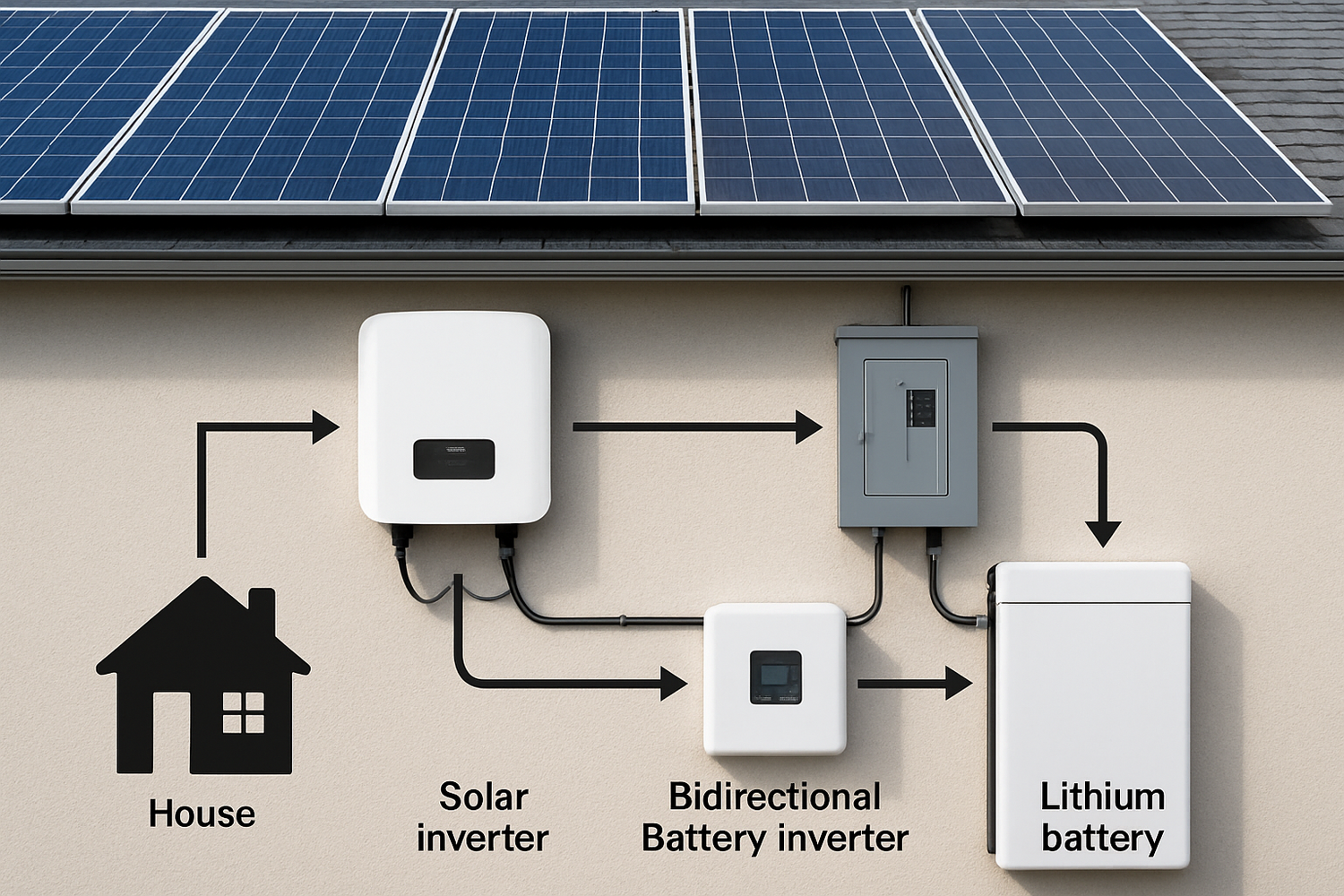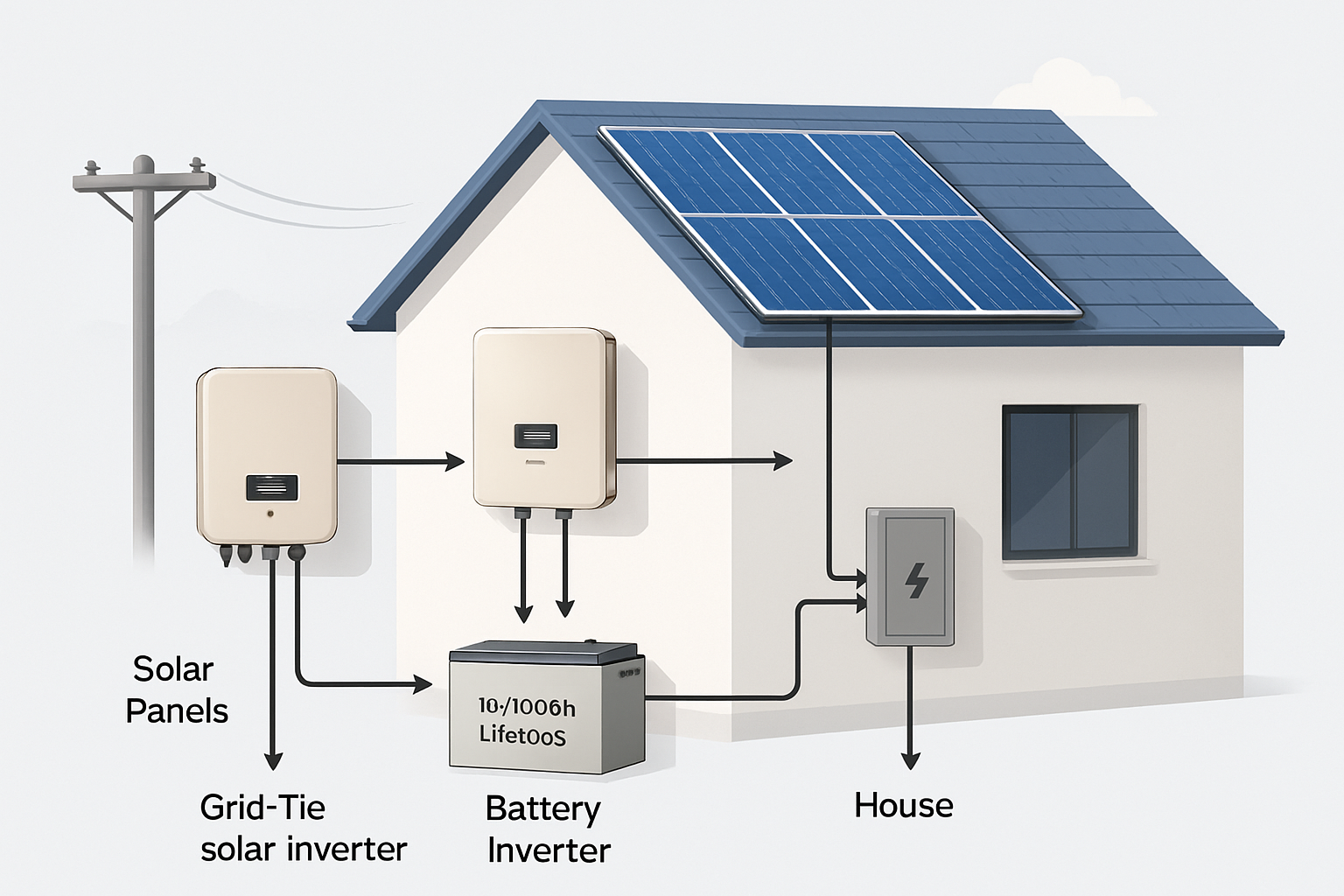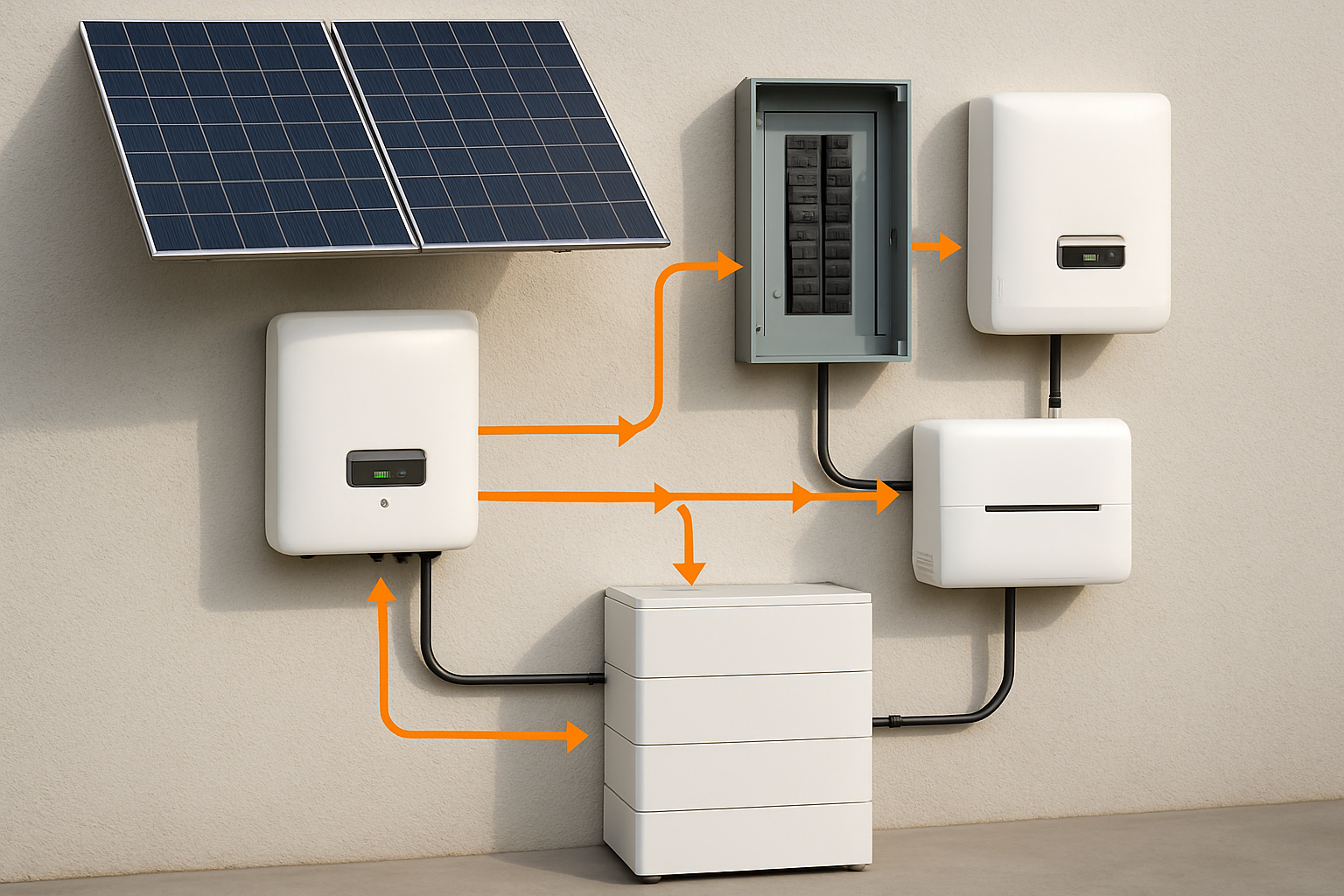Your existing solar panel system is a significant step toward energy independence. It generates clean power during the day, reducing your electricity bills. But what happens after sunset or during a power outage? Adding a lithium battery unlocks the full potential of your solar investment, providing stored energy when you need it most. This upgrade is more straightforward than many realize, primarily through a method called AC coupling.
Understanding the AC Coupled Battery System
Adding solar power storage to an operational solar setup is most commonly achieved with an AC coupled battery system. This approach is valued for its flexibility and minimal disruption to your current installation.
What Is AC Coupling?
In any solar installation, your panels produce direct current (DC) electricity. A solar inverter converts this to alternating current (AC) to power your home. In an AC coupled system, a second inverter—a battery inverter—is added. This new inverter connects to the AC side of your electrical system. It directs excess AC power from your solar array, converts it back to DC, and stores it in your new lithium battery. When you need that stored power, it converts the battery's DC electricity back to AC for your home's use. This configuration allows the solar panels and the battery to operate somewhat independently, coordinated by smart energy management.
Why AC Coupling Is Ideal for Retrofits
The primary advantage of AC coupling is its compatibility with virtually any existing grid-tied solar system. Because the battery system is added on the AC side, there is no need to replace your original solar inverter or rewire the panel array. This makes the installation process simpler, faster, and more cost-effective. You can scale your solar and battery systems independently, offering greater flexibility as your energy needs change.
Key Components for Your Solar Battery Upgrade
A successful retrofit involves a few core components working together. Selecting high-quality equipment is crucial for a reliable and long-lasting energy storage solution.
The Lithium Battery Pack
The heart of your storage system is the battery. Lithium iron phosphate (LiFePO4) batteries are a leading choice for residential use. They offer superior safety, a long lifespan of over 10 years, and the ability to discharge deeply without damage, meaning you can use more of the stored energy. A typical 12V 100Ah LiFePO4 battery provides a solid foundation for home energy storage, but the right size depends on your specific needs.
The Bidirectional Battery Inverter
This is the brain of the battery system. A bidirectional inverter, also known as an inverter/charger, manages the two-way flow of energy. It handles charging the battery with excess solar power and discharging it to supply your home with electricity. This component ensures that energy is directed intelligently, either for immediate use, storage, or export to the grid.
Energy Management and Monitoring
A robust Battery Management System (BMS) protects the battery by monitoring its voltage, temperature, and state of charge. Modern energy storage solutions also include sophisticated software that allows you to monitor your system's performance. This visibility helps you understand your energy production and consumption patterns, allowing for better optimization.
The Installation Process: An Overview
While the specifics will vary, adding an AC coupled lithium battery follows a general process. Safety and proper planning are paramount.
System Sizing and Selection
Before purchasing components, assess your energy goals. Do you want backup for essential appliances during an outage, or do you aim to maximize your use of solar power and minimize grid reliance? Calculate your average nightly energy consumption to determine the right battery capacity. For a deeper dive into evaluating system needs, the ultimate reference for solar storage performance offers valuable metrics and considerations.
Connecting the System
The new battery inverter is installed alongside your existing solar inverter and connected to your main electrical panel. The lithium battery pack is then connected to this new inverter. A qualified electrician ensures all connections are safe and compliant with local codes. The setup allows your original solar system to function as it always has, with the new battery system intelligently managing the energy flow.
Safety and Compliance
Working with electricity requires expertise. Professional installation is strongly recommended to ensure the system is safe and adheres to all electrical standards. This includes proper wiring, circuit protection, and obtaining any necessary permits. A well-installed system is a safe and reliable one.
Performance Gains and Real-World Benefits
Integrating a lithium battery transforms your relationship with energy, providing resilience and greater control.
Achieving Energy Independence
A battery allows you to store the solar energy you produce during the day for use at night. This dramatically increases your 'self-consumption' rate, reducing your dependence on the utility grid. According to the International Energy Agency (IEA), home energy storage systems are critical for enabling flexibility as grids incorporate more renewables. With battery storage, you are using more of your own clean power around the clock.
Reliable Backup Power
Grid instability is a growing concern. A recent report from the U.S. Department of Energy highlighted increasing risks of power outages due to factors like extreme weather and an aging infrastructure. An AC coupled battery system can provide seamless backup power, keeping essential appliances like refrigerators, lights, and medical devices running during an outage.
Financial Advantages
The cost of battery storage has fallen dramatically. The International Renewable Energy Agency (IRENA) reports that the total installed costs of battery storage projects have declined significantly, making them an increasingly viable investment for homeowners. In areas with Time-of-Use (TOU) electricity rates, you can use stored solar energy during peak evening hours when grid electricity is most expensive, leading to substantial savings on your utility bills.
| Metric | Solar System without Battery | Solar System with AC Coupled Battery |
|---|---|---|
| Solar Self-Consumption | ~30-40% | ~70-90% |
| Grid Reliance | High (especially at night) | Low |
| Backup Power | None | Available for critical loads |
| TOU Savings Potential | Limited | High |
Disclaimer: This information is for educational purposes only and does not constitute financial or investment advice.
A Forward-Thinking Upgrade
Adding a lithium battery to your existing solar system via AC coupling is a powerful upgrade. It enhances your energy independence, provides crucial backup power, and can offer significant financial benefits. By selecting the right components and ensuring a professional installation, you can transform your solar array into a comprehensive home energy solution that serves you day and night, rain or shine.
Frequently Asked Questions
Can a lithium battery be added to any existing solar panel system?
Yes, in most cases. AC coupling is a highly flexible method designed to be compatible with almost any existing grid-tied solar installation, regardless of the original inverter brand. It works alongside your current setup without requiring major changes to it.
How long will a LiFePO4 battery last?
High-quality LiFePO4 batteries are designed for longevity. They typically offer a lifespan of 10 years or more and can endure thousands of charge-discharge cycles while retaining a high percentage of their original capacity. A study noted in an IEA report highlights that battery lifetime is a critical factor in the overall environmental and financial performance of a storage system.
Is the installation process disruptive?
The process is minimally disruptive. Because an AC coupled system connects to your main electrical panel and doesn't require altering your existing solar array's wiring, the installation is generally faster and less complex than other retrofitting options.





Leave a comment
All comments are moderated before being published.
This site is protected by hCaptcha and the hCaptcha Privacy Policy and Terms of Service apply.